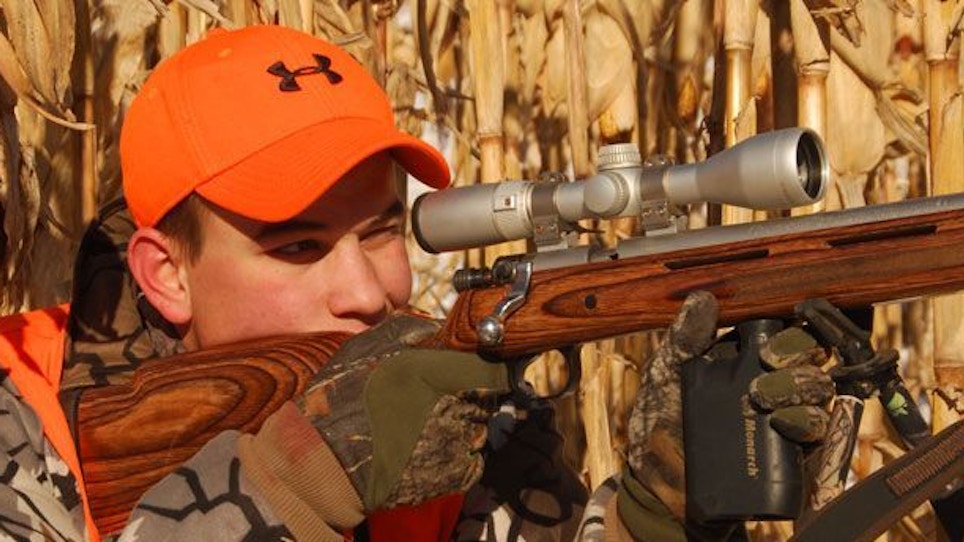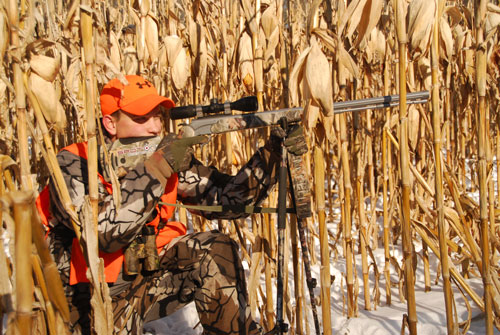
My client had never shot a muzzleloader before, but had taken my advice and bought a new blackpowder rifle for his Iowa firearms hunt rather than buy a rifled barrel and mount a scope on his only shotgun. He had a local sporting goods dealer set up the muzzleloader with a quality scope and collimate it so he’d be ready for fine-tuning on the range. Unfortunately, either he got too busy or he underestimated the importance of this aspect of his hunt before leaving home. When he told me this on the way to camp from the airport, it was obvious the first order of business when he got too camp was to head for the shooting bench and check out his new combo. Good thing we did!
I had him shoot two more shots with the same three-pellet load and the superbly accurate Hornady SST sabot-encased bullet to get a group. The first shot was high and left, the next was very low and very right, while the third was high and right again, barely on the paper. Some group.
Either he was closing his eyes and jerking the trigger or there was something drastically wrong with his outfit. The recoil from a three-pellet muzzleloader load behind a 250- or 300-grain bullet is not something to be taken lightly, but I’ve solved that problem by using a Caldwell Lead Sled. This superbly built firearm cradle, when loaded with a couple 25-pound bags of lead shot, virtually eliminates recoil from the heaviest loads and does wonders for getting the best out of your firearm’s accuracy potential. It also does much to alleviate the tendency of clients to become “recoil shy” from heavy muzzleloader loads. This mental factor makes a whitetail hunter far more likely to put that first (and, usually, only) shot in the right place without flinching or jerking.
However, in this client’s situation, even the Lead Sled didn’t seem to help, so I took three carefully executed shots with virtually the same result. Modern muzzleloaders and scopes might not be perfect off the assembly line, but most will generally perform better than most shooters’ ability to shoot. When the results are this erratic, 90 percent of the time it’s in the scope mounting. It didn’t take long to find that I could move this scope a tad. The sporting goods store salesman might have collimated the scope, but he forgot to tighten the mount bases adequately and obviously didn’t Loctite them in. A quick trip to the camp house for my tools and a tube of Loctite remedied the situation. A few more shots and some scope adjustment and the hunter was ready to go deer hunting. Two days later he killed a 140-class buck at 125 yards and was one happy camper.
Maximize Your Scope
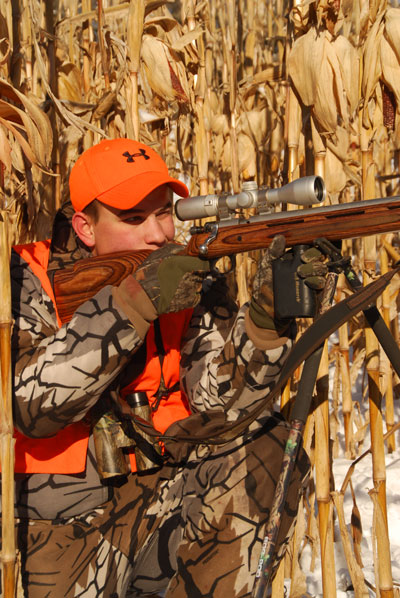
Muzzleloaders — even with a 150-grain or three-pellet load — have a much more pronounced trajectory curve than a centerfire rifle, which makes accurate range determination the key to putting that bullet in the kill zone. With the proliferation of super-accurate rangefinders available today, accurate range estimation is a no-brainer. However, the hunter still has to know where his muzzleloader slug will hit at any given distance.
With a standard crosshair in my muzzleloader scope, the first step is getting an accurate load for that individual gun. This important phase has been covered in several previous columns. Once this is done I take the muzzleloader to the long-distance range and set up a target measuring 2x3 feet with an aiming point near the top. My muzzleloaders are sighted dead-on at 100 yards, so I shoot a couple shots each at 50, 100, 150, 200, 225 and 250 yards, all with the same center hold on the bull’s-eye or aiming spot. I check and mark the bullet holes after each distance. This will show you in no uncertain terms your downrange bullet drop for that particular muzzleloader/bullet combination. Combine this knowledge with the use of a rangefinder and lots more range practice, and your excuses for missing within effective muzzleloader range are greatly diminished.
Utilize Technology
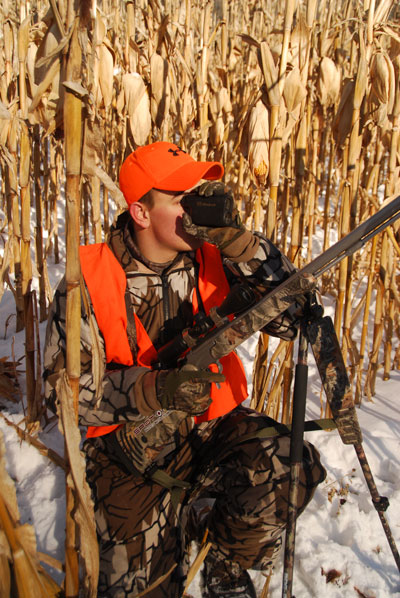
Nikon Optics was the first to come out with a superb BDC reticle, and in my estimation the Nikon BDC reticles still have the edge for muzzleloaders. Nikon BDC reticle muzzleloader scopes have a series of small aiming circle under the center crosshairs that are designed to be used with a 150-grain or three-pellet powder charge behind a 250-grain saboted bullet. The scope is sighted dead-on at 100 yards with the above load. The first aiming circle is on at 150 yards, the second on at 200 yards, the third at 225 yards and the bottom aiming point at 250 yards. Combine with an accurate rangefinder and you should never miss. Well, theoretically anyway!
Leupold has its own version called the BAS or Ballistic Aiming System that is very similar to Nikon’s, while Bushnell has their DOA, or Dead On Accurate, ballistic compensating scope. Bushnell’s scopes also include field-judging hash marks to help the hunter with plenty of time to get some idea of the antler size and trophy qualities of the deer he is scoping. In the bullet drop compensation category, both the Leupold and Bushnell products, as well as the other scopes on the market with this feature, are very similar in use.
One of the best and most useful computerized scope utilization programs I’ve worked with is Nikon’s Spot-On Ballistic Match Technology program. This almost unbelievable program was designed primarily for use with any and all Nikon scopes in everything from a .22 long rifle to a .700 Nitro Express, including shotguns and muzzleloaders.
The muzzleloader part of the charts will provide you with downrange ballistics for muzzleloader powder charges from 100 to 150 grains, specifically calibrated for most of the muzzleloader bullets on the market. If you are serious about getting the most out of your muzzleloader/scope combo, either pull this program up on your computer or have your kid do it for you and give it a try. You won’t be sorry.
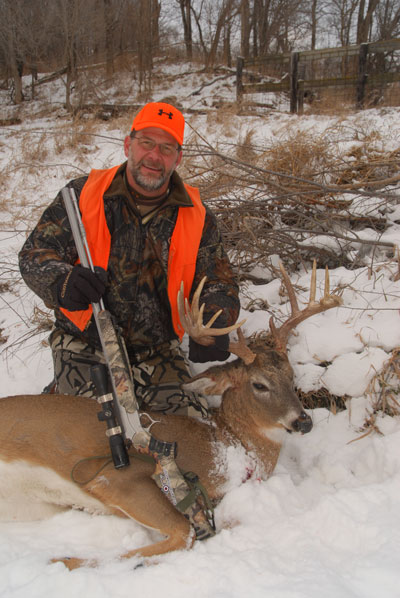
Whether this is because of extra work in the care and feeding of a muzzleloader, the recoil of heavy loads, or just inherent laziness, I don’t know, but time spent shooting your muzzleloader is never time wasted when it comes to the moment of truth and you have only a few seconds to get off an accurate shot at a trophy buck.
